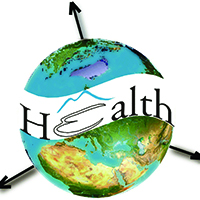COVID-19: End of the beginning?

Published: 29 May 2020
Abstract Views: 28023
PDF: 874
HTML: 12
HTML: 12
Publisher's note
All claims expressed in this article are solely those of the authors and do not necessarily represent those of their affiliated organizations, or those of the publisher, the editors and the reviewers. Any product that may be evaluated in this article or claim that may be made by its manufacturer is not guaranteed or endorsed by the publisher.
All claims expressed in this article are solely those of the authors and do not necessarily represent those of their affiliated organizations, or those of the publisher, the editors and the reviewers. Any product that may be evaluated in this article or claim that may be made by its manufacturer is not guaranteed or endorsed by the publisher.
Similar Articles
- Benn Sartorius, Kurt Sartorius, How much incident lung cancer was missed globally in 2012? An ecological country-level study , Geospatial Health: Vol. 11 No. 2 (2016)
- Olga De Cos, Valentín Castillo-Salcines, David Cantarero-Prieto, A geographical information system model to define COVID-19 problem areas with an analysis in the socio-economic context at the regional scale in the North of Spain , Geospatial Health: Vol. 17 No. s1 (2022): Special issue on COVID-19
- Behzad Kiani, Nasser Bagheri, Ahmad Tara, Benyamin Hoseini, Hamed Tabesh, Mahmood Tara, Revealed access to haemodialysis facilities in northeastern Iran: Factors that matter in rural and urban areas , Geospatial Health: Vol. 12 No. 2 (2017)
- Adrian M. Tompkins, Nicky McCreesh, Migration statistics relevant for malaria transmission in Senegal derived from mobile phone data and used in an agent-based migration model , Geospatial Health: Vol. 11 No. s1 (2016): HEALTHY FUTURES
- Young-Gyu Kwon, Man-Kyu Choi, Spatial analysis of the relationship between out-of-pocket expenditure and socioeconomic status in South Korea , Geospatial Health: Vol. 18 No. 1 (2023)
- Marcos César Ferreira, Spatial association between the incidence rate of COVID-19 and poverty in the São Paulo municipality, Brazil , Geospatial Health: Vol. 15 No. 2 (2020)
- Verônica Santos Barbosa, Ricardo José de Paula Souza e Guimarães, Rodrigo Moraes Loyo, Constança Simões Barbosa, Modelling of the distribution of Biomphalaria glabrata and Biomphalaria straminea in the metropolitan region of Recife, Pernambuco, Brazil , Geospatial Health: Vol. 11 No. 3 (2016)
- Fleur Hierink, Nima Yaghmaei, Mirjam I. Bakker, Nicolas Ray, Marc van den Homberg, Geospatial tools and data for health service delivery: opportunities and challenges across the disaster management cycle , Geospatial Health: Vol. 19 No. 2 (2024)
- Askhat Shaltynov, Jorge Rocha , Ulzhan Jamedinova, Ayan Myssayev, Assessment of primary healthcare accessibility and inequality in north-eastern Kazakhstan , Geospatial Health: Vol. 17 No. 1 (2022)
- Zhao Rong Huang, Miao Ge, Xin Rui Pang, Pu Song, Congxia Wang, The spatial distribution of interleukin-4 (IL-4) reference values in China based on a back propagation (BP) neural network , Geospatial Health: Vol. 18 No. 2 (2023)
<< < 5 6 7 8 9 10 11 12 13 > >>
You may also start an advanced similarity search for this article.

 https://doi.org/10.4081/gh.2020.897
https://doi.org/10.4081/gh.2020.897




